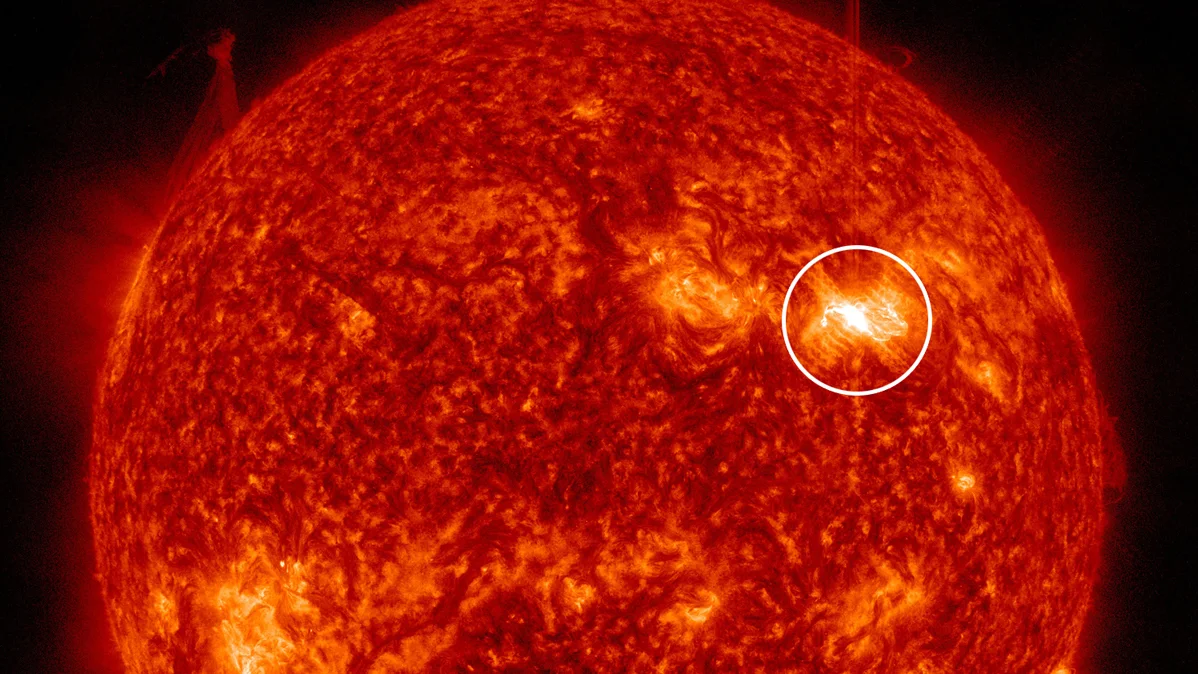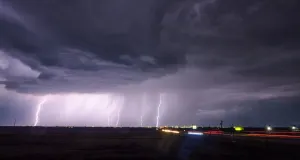
NASA captures the Sun's first X-class flare of 2022
The spot that emitted this powerful flare continues to crackle with energy.
After setting up a spectacular display of the Northern Lights in our skies this week, the Sun blasted out its first powerful X-class flare of this year.
[Editor's Note: A previous version of this article called this the first X-class flare of the new solar cycle. It is, in fact, the third of this cycle, but the first of 2022. We apologize for any confusion. A tip of the hat to space weather forecaster Sara Housseal for the correction. The story continues below.]
The Sun is certainly becoming more active.
Since the start of the current solar cycle, which began in December 2019, solar activity has been ramping up. We are seeing more sunspots tracking across the Sun's surface, and satellites are spying more flares and eruptions as well.
One 'active region' on the Sun, named AR2975, has been attracting attention.

AR 2975 and AR 2976 stand out on the surface of the Sun, in this image captured on March 30, 2022, by the Solar Dynamics Observatory. Credit: NASA
This tangle of magnetic fields and solar plasma has been crackling with energy ever since it swung around to the Earth-facing side of the Sun a week ago. As we've watched, it blasted out numerous weak to moderate solar flares, including some this past Monday that also launched clouds of solar matter out into space. These 'coronal mass ejections' or 'solar storms' reached Earth late on Tuesday, sparking bright auroras that we could see repeated over the next few nights.
On Wednesday, the active region stepped things up a notch, literally.
Leading up to now, the most intense burst we've seen from AR2975 was a moderately strong M4.1-class flare. At around 1:30 p.m. EDT, on March 30, though, it emitted a much more powerful blast — an X1.3-class flare.

This view of the Sun is specially filtered by SDO to capture high-intensity solar flare activity. To the top right, a bright X1.3-class flare glares against the darker background of the solar surface. Credit: NASA/SDO
Solar flares are classified under one of four categories — B, C, M, and X — with each class representing flares 10 times more powerful than the class below.

The scale for solar flares. Credit: NASA/Goddard Space Flight Center
According to NASA, "X-class denotes the most intense flares, while the number provides more information about its strength. An X2 is twice as intense as an X1, an X3 is three times as intense, etc."
Each class except X goes up to a maximum value of 9.9 before it ticks over into the category above. While it's rare to see flares that rank higher than X9.9-class, it does happen. For this reason, the X-class part of the scale is opened-ended.
The strongest solar flare recorded so far happened on November 4, 2003. Although it was estimated as X28-class at the time, it was difficult to tell for sure because the intense x-rays it emitted completely saturated the detector. Some studies since then have suggested that the flare may have been as powerful as X48-class.
The infamous Carrington Event of 1859 — quite possibly the strongest geomagnetic storm in history — may have been caused by an even stronger solar flare. However, the technology didn't exist at the time to measure it on the same scale we use today.

Solar cycles are tracked by the number of sunspots we see. These cycles typically last for about 11 years, as the number of sunspots and solar activity ramp up to a maximum and then return to a minimum. This graph shows the previous three solar cycles, the last of which ended in December 2019. The maximum of Solar Cycle 25 is predicted to happen sometime in 2025. Credit: NOAA Space Weather Prediction Center
We have at least three years to go before the next solar maximum, which is expected in 2025. However, based on the number of sunspots, which has been higher than predicted, Solar Cycle 25 appears to be out-performing the forecast. Whether that trend continues or not, we'll just have to see.










